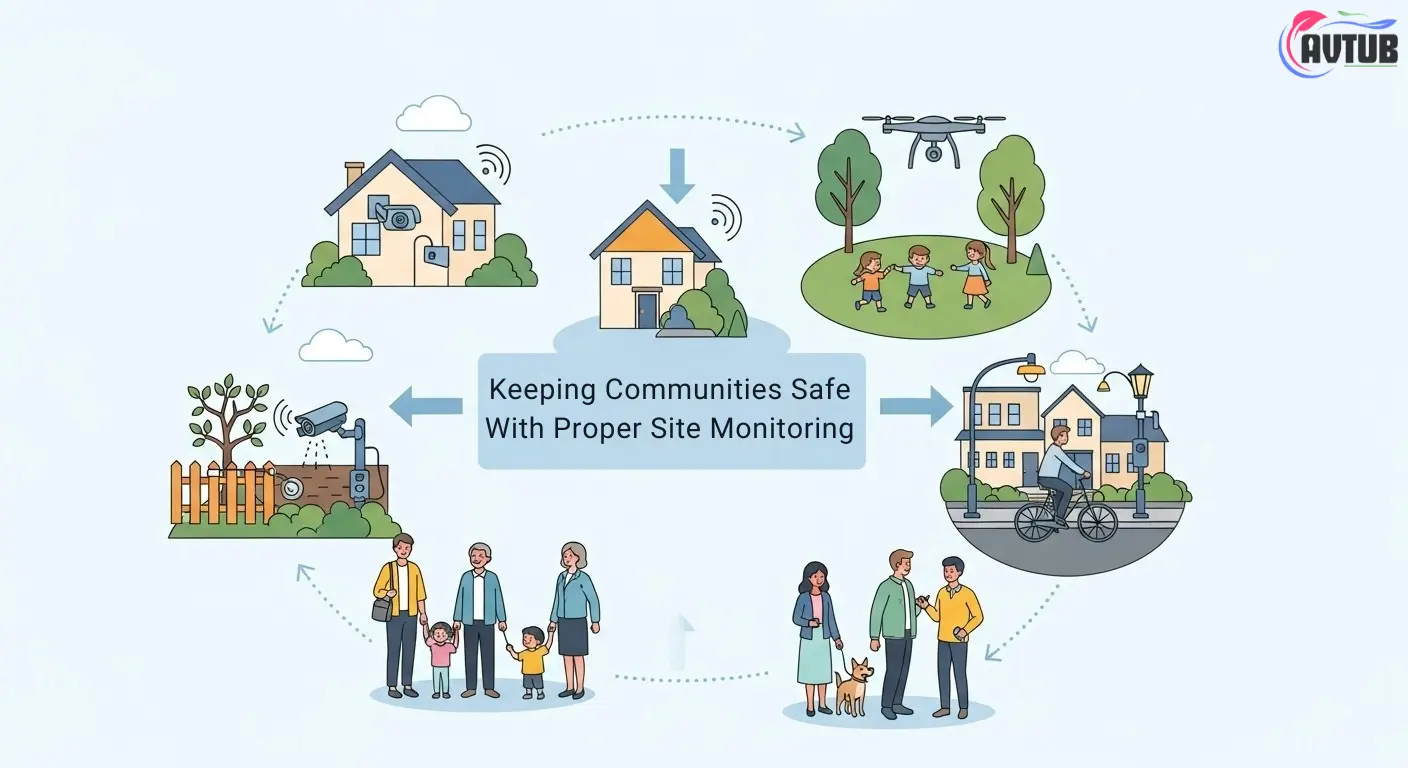Construction projects bring progress and new opportunities, but they also introduce potential risks. From soil erosion polluting local waterways to unsafe conditions on-site, a single oversight can have far-reaching consequences for the surrounding community. Effective site monitoring isn’t just about ticking boxes for compliance; it’s a fundamental part of being a responsible developer and a good neighbor. This article explains how proper site monitoring works and why it’s essential for protecting both the environment and the people who live nearby.
Why Site Monitoring Matters
Construction sites are dynamic environments where the landscape is constantly changing. Activities like excavation, grading, and building can disturb the ground, exposing soil to wind and rain. Without proper controls, this loose soil can wash away, carrying pollutants like chemicals, debris, and sediment into storm drains. From there, it flows directly into local rivers, lakes, and streams.
This runoff pollution does more than just make the water look dirty. It can harm aquatic life, contaminate drinking water sources, and lead to costly clean-up efforts for local municipalities. Beyond environmental damage, poorly managed sites can create physical hazards. Unsecured materials, unstable ground, and inadequate fencing can pose a danger to both workers and curious residents, especially children. Effective site monitoring is the first line of defense against these preventable problems, ensuring that a project contributes positively to the community without causing unintended harm.
Key Components of Effective Site Monitoring
A comprehensive site monitoring plan involves several critical elements working together to maintain safety and compliance. It’s a proactive approach that focuses on prevention rather than reaction.
Erosion and Sediment Control
This is the cornerstone of environmental protection on a construction site. The goal is to keep soil in place and prevent sediment from leaving the site. This is achieved through Best Management Practices (BMPs), which include:
- Silt Fences: These are temporary barriers made of fabric, designed to intercept and detain sediment-laden runoff from small areas.
- Check Dams: Small, temporary dams constructed across a swale or drainage ditch slow the velocity of water, allowing sediment to settle.
- Inlet Protection: Filters placed around storm drain inlets catch sediment before it can enter the stormwater system.
- Stabilized Construction Entrances: A pad of coarse aggregate located where vehicles enter and exit the site helps knock mud and dirt off tires, preventing it from being tracked onto public roads.
Regular inspections of these measures are crucial. A torn silt fence or a clogged inlet filter is ineffective. Consistent monitoring ensures these controls are functioning as intended, especially after heavy rainfall.
Stormwater Pollution Prevention Plan (SWPPP)
For many construction projects, a Stormwater Pollution Prevention Plan (SWPPP) is a legal requirement. This document is a comprehensive blueprint for how the site will handle stormwater and prevent pollution. It identifies all potential pollutant sources and details the specific BMPs that will be used to control them.
The plan also outlines inspection schedules, maintenance procedures, and record-keeping protocols. A dedicated SWPPP inspector or a qualified site manager is often responsible for implementing the plan, conducting regular site assessments, and documenting that all measures are in place and effective. This creates a clear chain of accountability and ensures compliance is taken seriously.
Site Safety and Security
Protecting the community also means securing the site itself:
- Perimeter Fencing: Proper fencing prevents unauthorized access, keeping residents and especially children away from potential dangers like open trenches, heavy machinery, and construction materials.
- Clear Signage: Posting clear “No Trespassing” and warning signs reinforces the boundary and informs the public of potential hazards.
- Material Storage: Properly securing and covering materials prevents them from being blown away by wind or washed into drainage systems.
These measures help contain construction activities safely within the project’s boundaries, reducing the risk of accidents and liability.
Fostering a Culture of Responsibility

Ultimately, the success of any site monitoring plan depends on the people implementing it. A project that prioritizes safety and environmental stewardship builds trust with the community and enhances a company’s reputation. This begins with training all on-site personnel on the importance of the SWPPP and their role in upholding it. When everyone from the project manager to the equipment operator understands their responsibilities, compliance becomes a shared goal rather than a top-down mandate.
Engaging with the community is also beneficial. Keeping residents informed about the project’s timeline and the protective measures in place can alleviate concerns and build goodwill. A transparent and proactive approach shows respect for the neighborhood and a commitment to minimizing disruption.
Build with Confidence and Care
Proper site monitoring is an investment in safety, compliance, and community trust. By implementing robust erosion controls, adhering to a well-crafted SWPPP, and securing the site, developers can prevent pollution and protect public well-being. This proactive approach ensures that new developments enhance a community without causing harm to its environment or its residents. Building responsibly creates a legacy of quality and care that lasts long after the construction is complete.


